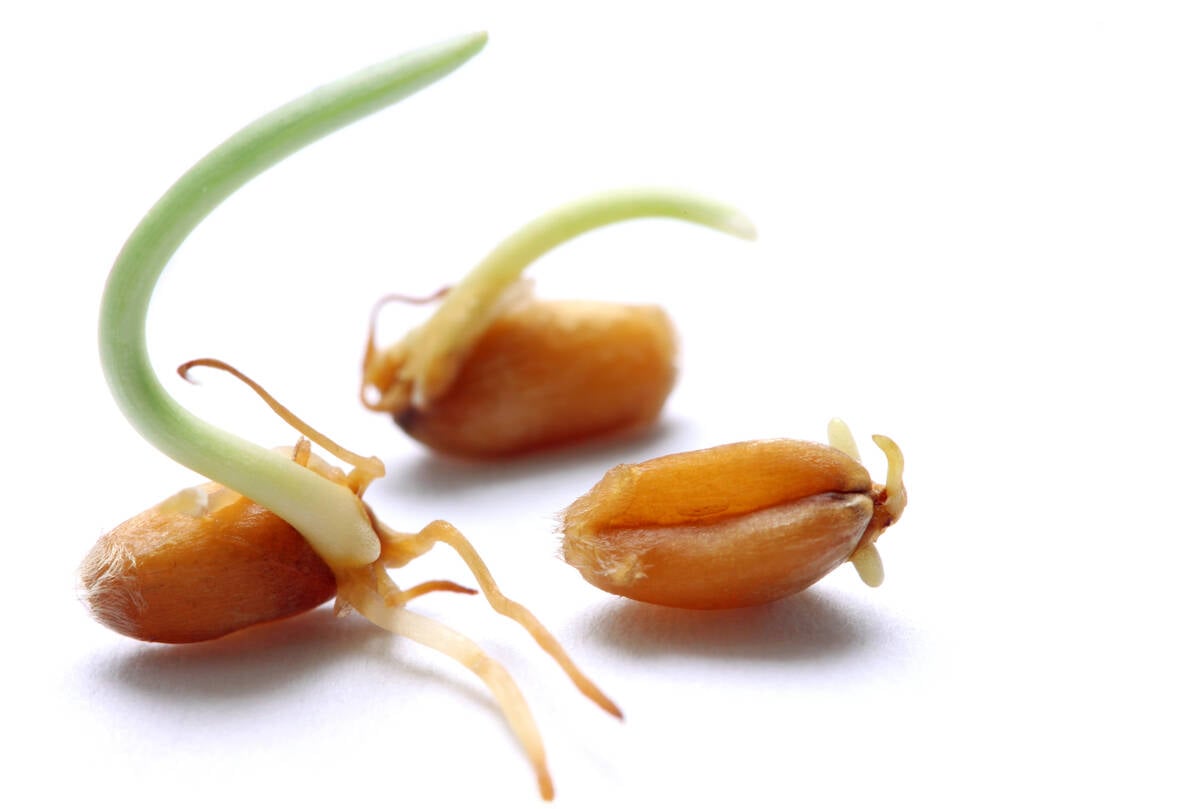Manitoba’s soybean growers set a record this year with 440,000 acres seeded.
But bad news is just one freezing night away if producers are not able to harvest all of it.
“Typically we get a frost mid-September, and if that happens the crop is so far behind it could finish it,” said Myron Pedersen, who planted 600 acres of soybeans on his farm near Carman, Man., this spring.
However, Pedersen remains optimistic that Manitoba producers will harvest a soybean crop this fall.
Read Also

Manitoba farmers fight sprouted wheat after rain
Rain in mid-September has led to wheat sprouting problems in some Manitoba farm fields.
“There’s a little bit of negativity out there, but it really doesn’t get you too far.”
He said more Manitoba farmers are growing soybeans, partly because crop insurance was expanded to cover more of the province and because soybeans are a low input crop.
Those acres are certainly looking better than they did in late July, Pedersen said, when almost every producer was feeling down because soybeans were weeks behind typical development.
Many Manitoba growers were forced to seed soybeans later than usual this year because of wet conditions.
The later than usual seeding date, combined with a cooler than usual summer, means producers will need a warm September to harvest the crop.
“Right now, we’re probably sitting at about 90 percent of our normal heat units,” said Brent Reid, a crop production adviser and soybean specialist with Manitoba Agriculture.
The cool and wet summer also provided ideal conditions for soybean diseases such as white mould, also known as sclerotinia.
“It’s in the crop every year … but some years, due to the weather, it shows up more,” Reid said.
Incorrect rotations
Poor crop rotations, such as seeding soybeans after canola or sunflowers, might also have contributed to this year’s white mould problem.
“All those crops share the same diseases, so if it was grown on canola stubble, it (white mould) was showing up more than if it was grown in wheat stubble,” Reid said.
He has also noticed cases in which soybeans have poorly developed roots and insufficient nodulation.
“This year we were seeing a few fields that had some issues because the on-seed bacteria died before it was able to fix with the plant because of cool wet conditions,” he said.
“On fields that have never had soybeans grown before, or maybe once before, we recommend that growers use an on-seed inoculant, plus a granular inoculant that goes in the ground with the seed.”
That way, Reid said, growers have a second chance at nodulation if the on-seed bacteria don’t survive.
He said this year’s cool and difficult growing conditions illustrate why it’s important for growers to make the right decision in the spring.
“Producers need to pick a variety with a maturity rating that is appropriate for their area,” he said.
“You don’t want to pick a longer maturing variety with the hope of getting a little bit higher yield.”















